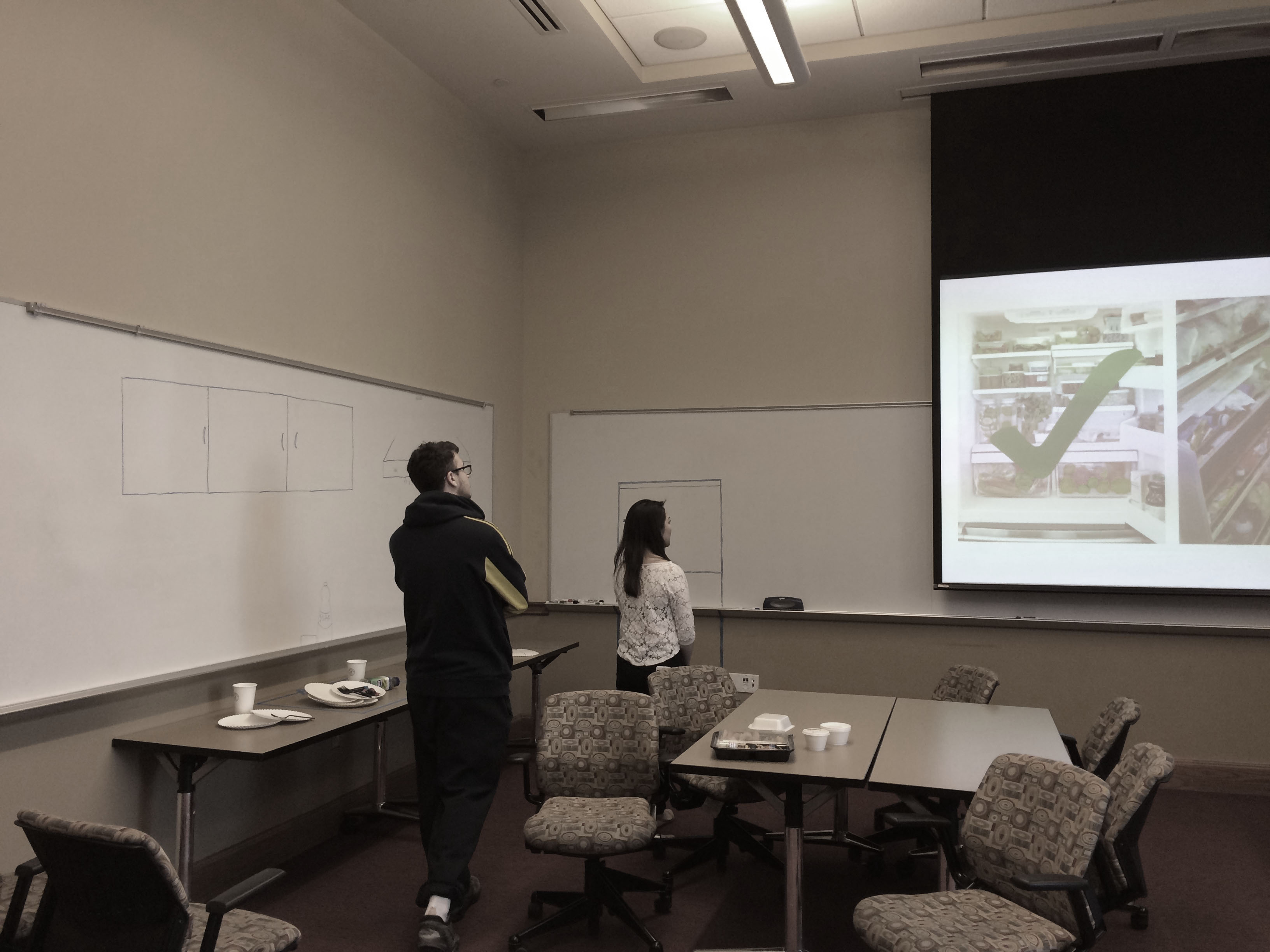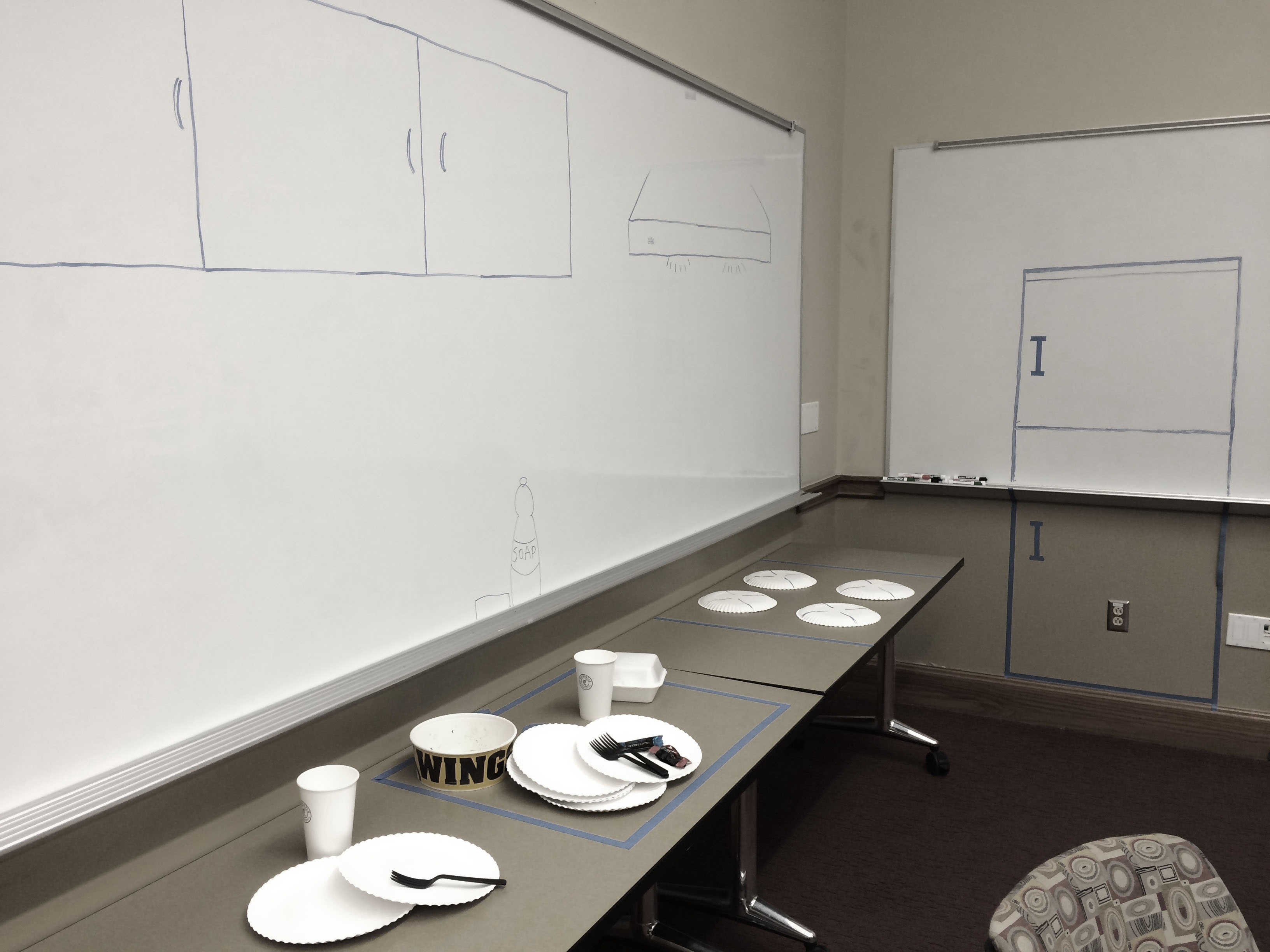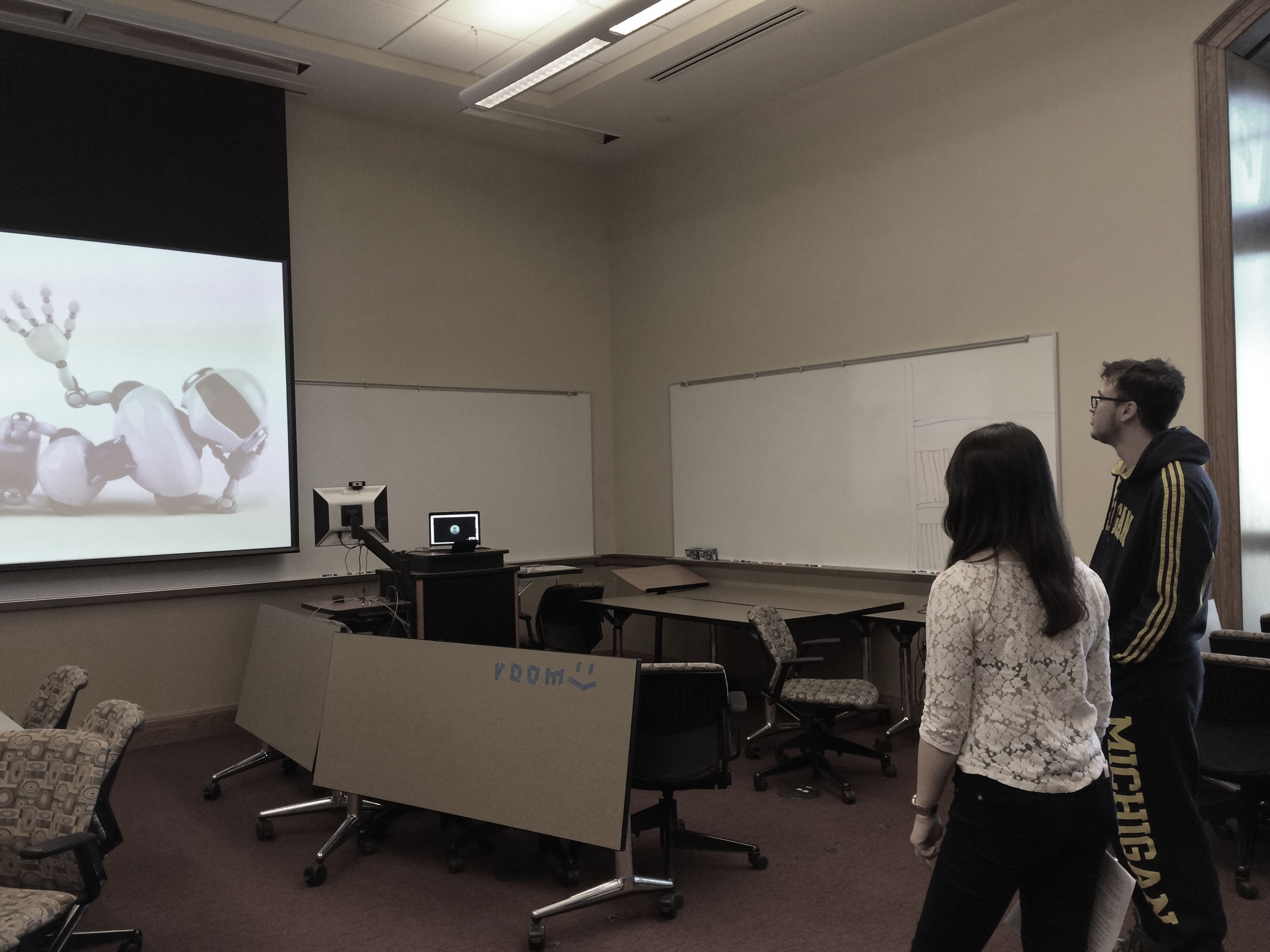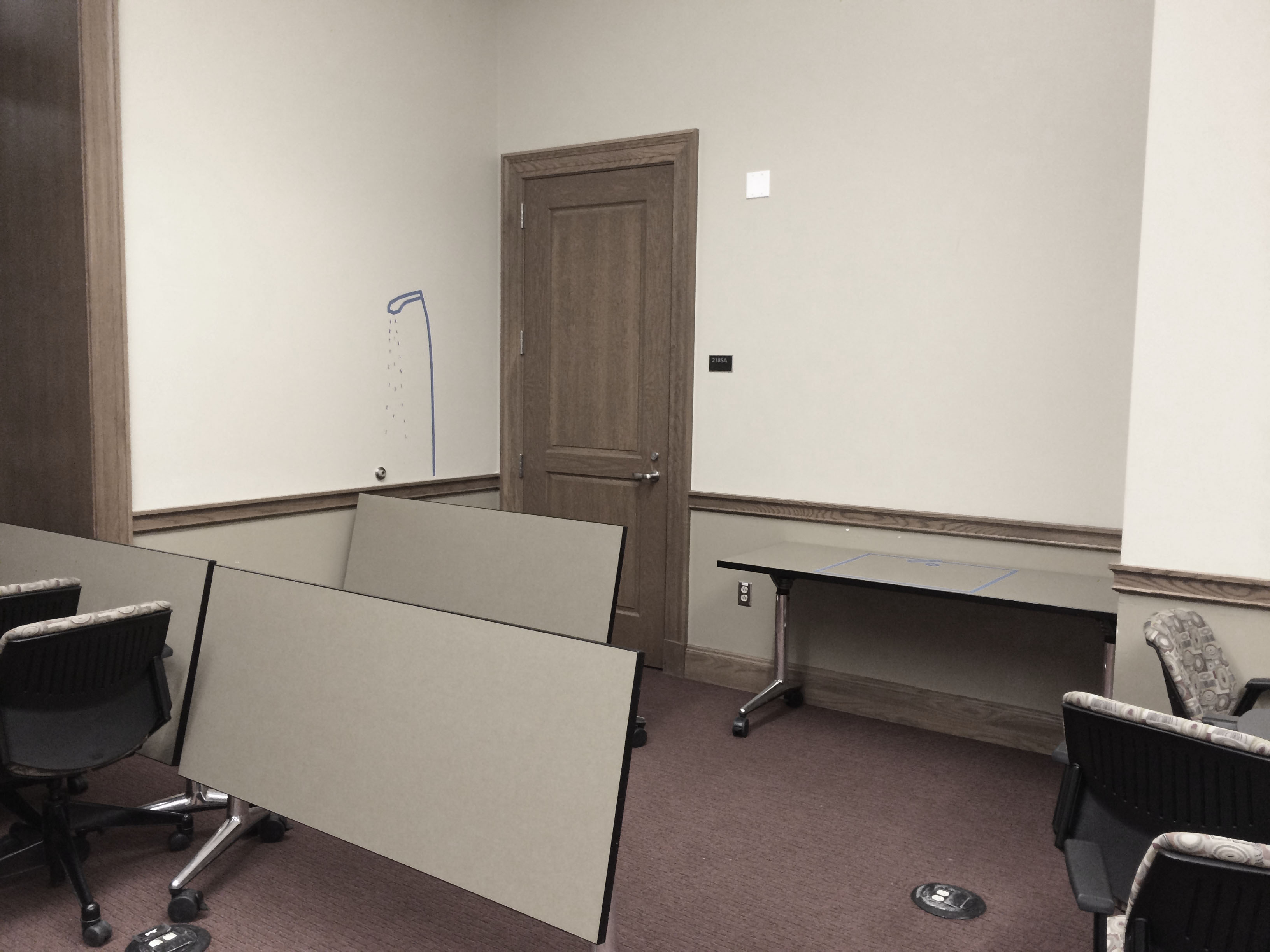SmartestHome
|A ubiquitous reminder system for roommates
OVERVIEW
My Role -
Product Manager | UX Designer | UX Researcher | "Sketching Master"
Skills - User Enactment, Diary Study, Interview, Sketching, Adobe Illustrator, Photoshop, Video Prototyping
Many people enjoy living in an apartment with one or more roommates, and there are pros and cons. Based on our studies and observations, people are forgetful and having different living habits, cleaning tolerances and daily routines. The need to remind each other of daily house-keeping duties is always a pain. The Smartest Home is a service system intending to solve this problem by providing an effective communication and reminder system to help people build good living habits and reduce potential conflicts among roommates.
Product Concept
The product concept we are proposing is called the Smartest Home, an advanced ubiquitous smart home system for people sharing their apartments with their roommates. The Smartest Home helps its users build their living habits by reminding them of house cleaning duties that may affect their fellow roommates’ day.
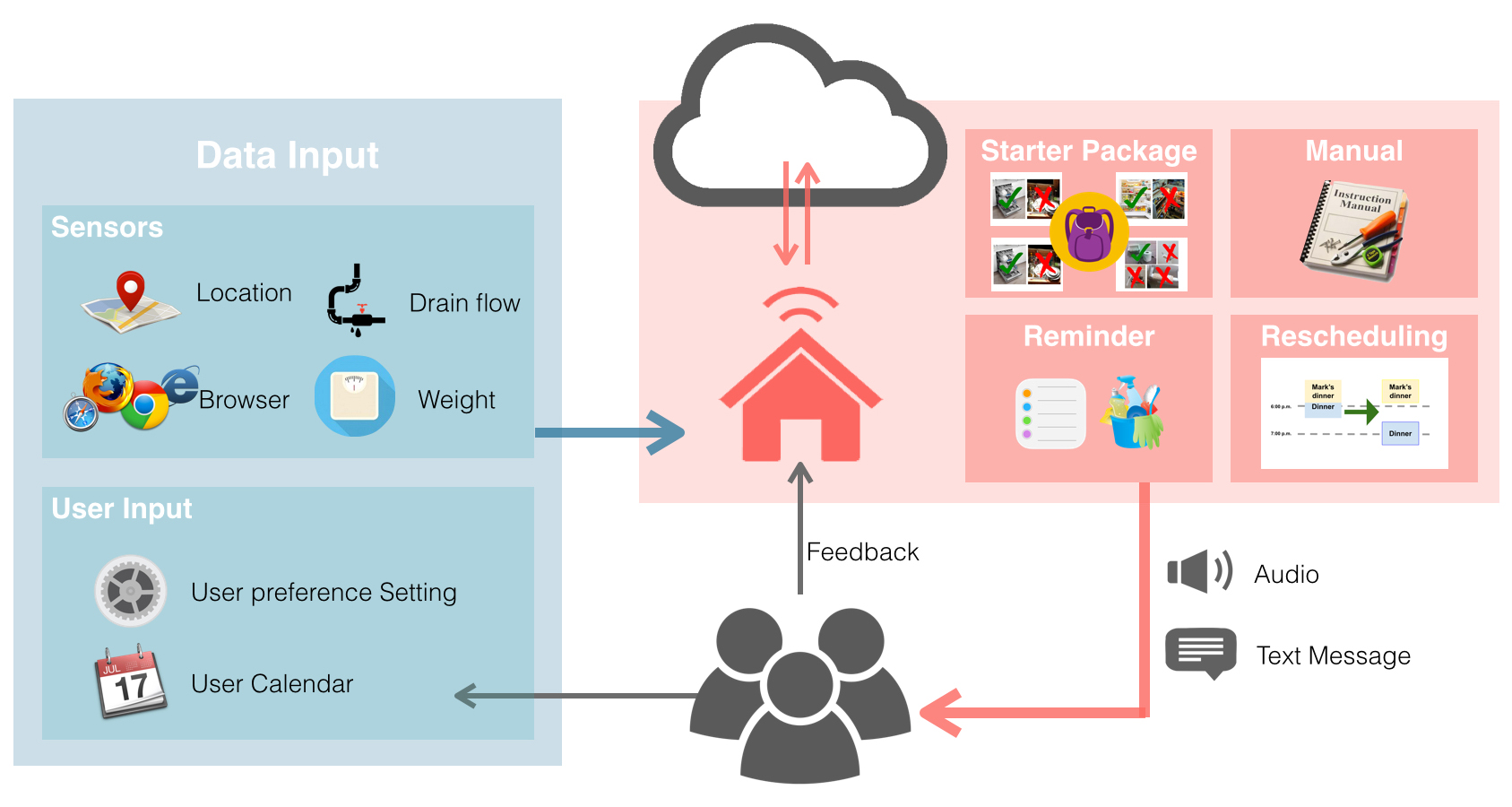
The information that the Smartest Home provides with users comes from a variety of sources. Over the time, it aims to help improve good living habits for users that will last well after the users don’t live with the Smartest Home system anymore. We ultimately want to convey that this system is put in place to help people to be a better roommate and to help form better living habits in general.
DESIGN PROCESS
Formative Research: Diary Study and Interview
We designed an elicitation diary study followed by an interview, in order to gather preliminary information and get in-depth understandings about user’s day-to-day interactions with his/her roommates regarding shared household responsibility, communication and conflicts. Based on our diary studies and interview/observational findings, we’ve developed three distinct scenarios that highlight different aspects that we think are a part of an ultimate ubiquitous household solution to often forgotten shared responsibilities.
Experience Prototype: User Enactment
Following our formative study, we conducted a study in which each participant took part in three user enactments (UE) in order to gather user’s reaction and feedback towards each concept. The UE we set up simulated an apartment shared between two people and the system was a much more evolved version of what we are capable of now with regardless of current AI technology constraints. Because of the relatively high fidelity and realism of our UE setup, our users clearly made the distinction between talking to our designed system and talking to a human being. To our surprise, they could accept the system talking down to them and even punishing them for certain bad habits as long as the message was only directed to them. After our UE study, we were able to strengthen a number of our earlier findings as well as add to our list of surprises with regards to what the users think of our system.
User Enactment Photos
It was clear that the most important design implications which resulted from our findings were the important system setup and initialization, personalization and user feedback loop. By adding additional data as input to our system (like calendar events and GPS tracking) our system can have much better event recognition than it would have with sensors alone. We chose targeted audio and text messaging as the primary output channels for our system to communicate with the user because they are the signals easy to interpret and can single out the user in case of privacy concerns regarding to the messages.
Scenario Storyboards

The system walks the user through a tour/tutorial.

The user can initialize their preferences and do a personality questionnaire.

Users interact with the system with natural conversation.

Users can correct the system using the system interface.

Sometimes, schedules between roommates don’t work out exactly, and the system would help.
